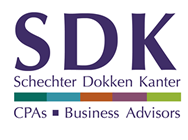LIFO: Is Now the Time to Make a Change?
If your business relies on inventory, you may be familiar with the terms “FIFO” and “LIFO”. These two methods of inventory costing can have a big impact on your financial reporting and its tax liabilities. Read on for more about why now may be the time to evaluate which method you use.
What are “FIFO” and “LIFO”?
FIFO, or First-In First-Out, is a method used for calculating the cost of your inventory and cost of goods sold (COGS). The FIFO method is based on the assumption that the first inventory purchased is the first inventory sold, which is probably how it occurs physically.
LIFO, or Last-In First-Out, is a method used for calculating your year-end inventory and cost of goods sold (COGS). The LIFO costing method is based on the assumption that the last inventory purchased is the first inventory sold. You don’t have to physically treat your inventory that way though. Then, when accounting for inventory and COGS, the prices paid for the most recent inventory purchases are used to value year-end inventory. The effect is usually a lower inventory value at year-end and higher COGS, thereby reducing both GAAP and taxable income.
Why Focus on LIFO Now?
During inflationary times, it is beneficial to use the LIFO method for inventory, since you are expensing your most recently purchased goods first, which are purchased at the highest cost. This in effect creates a tax deferral, which is kind of like getting an interest free loan from the US Treasury.
Should You Make a Change?
There are many factors that go into making an accounting method change, and the team at SDK is here to work with you to choose the right option for your business. Our group of professionals have helped clients make this change with great financial benefits and we are always here to discuss and find the right solutions. Call our team today at 612-332-5500 or email us at info@sdkcpa.com to schedule a time to review your current business needs.


